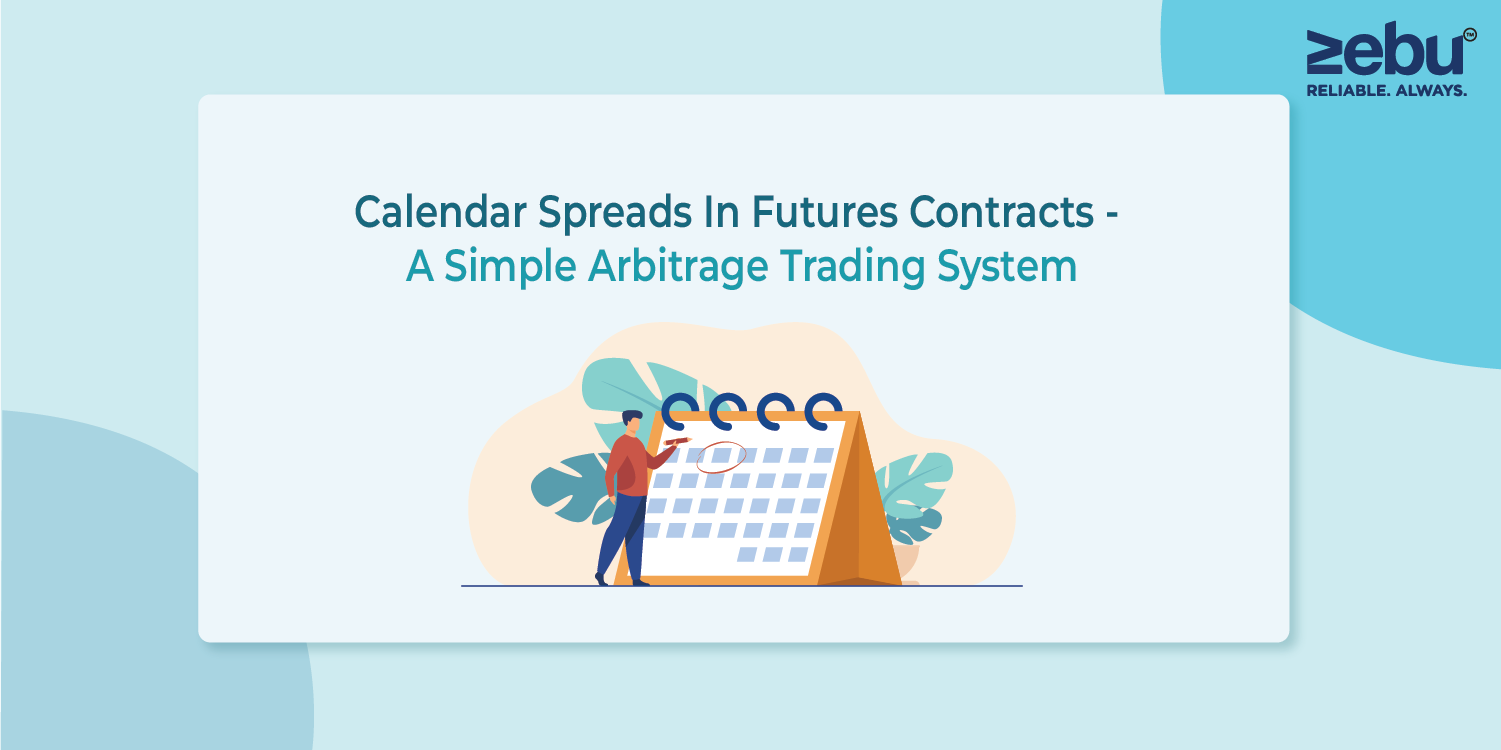
As the name implies, a calendar spread is a spread technique in which you profit from the price difference between futures contracts for the same underlying in different expiries. When compared to taking a directional view on the Nifty or individual stocks, this is considered a lower-risk and more predictable strategy. Calendar spread trades are popular among institutions and HNIs looking for low-risk tactics that allow them to earn significant rupee returns based on volume.
Executing calendar spreads requires a huge amount of analysis and the lowest brokerages you can find in India. As one of the fastest-growing stock broker companies in India, we at Zebu have created the best trading platform for calendar spreads and other futures and options strategies.
Let’s take a look at what a Calendar Spread is and how it works.
What Is A Calendar Spread?
The Calendar spread is the purchase and sale of two futures contracts on the same underlying for different expiries. By buying one contract and selling the other, you can establish a calendar spread between Nifty June and Nifty July, for example. This way, your calendar spread payoffs depend on the spread increasing or contracting. For example, the Calendar spread definition states that you go long on the Calendar spread when you expect the spread to broaden and short on the Calendar spread when you expect the spread to reduce.
Calendar spread process flow
Remember that you can execute a Calendar spread in both options and futures. Both are popular in India, but for the sake of simplicity, we will focus on the calendar spread on Nifty futures. Calendar spreads on options will likewise follow the same logic. Calculate the fair value of the current month contract as the first step in the Calendar spread. The fair value of the mid-month or far-month contract can be calculated in the second stage. You can buy the underpriced contract and sell the overpriced contract once you notice the mispricing. Your Calendar spread is now complete.
You can either buy the current month contract or sell the mid-month contract based on the relative mispricing. You can also sell the current month contract and buy the mid-month contract as an alternative. There is no restriction on this.
Let’s look at an example
RIL June Futures are bought at Rs.2,245 and RIL July Futures are sold at Rs.2,250. Your spread is Rs.5 and you expect it to alter in your favour so that you can benefit. Assume that the RIL June futures rise to Rs.2260 and the RIL July futures rise to Rs.2,257 after a few days. When the calendar is closed, you earn Rs.15 on June futures but lose Rs.7 on July futures. In other words, you made an Rs.8 profit on the calendar spread.
The spread changed from a positive of Rs.5 to a negative of Rs.-3, resulting in a net profit of Rs.8 on the calendar spread. This is how spread earnings are made. In most cases, the risk associated with such calendar spreads is minimal.
Key factors to keep in mind
It’s worth noting that when you buy and sell a calendar spread, you’re buying and selling futures of the same stock, but from contracts with different expirations, like in the example of Reliance Industries. What is supposed to be gained here is the difference between the prices of the two contracts. Of course, in our example, you received a bonus because the calendar switched from a positive to a negative spread, resulting in a significantly larger profit. Calendar spreads have a modest trading risk, so the earnings you make on them are also small. As a result, this is better suitable for risk-averse institutions that rely on volume to generate rupee gains.
Now we’ll look at the final feature of the calendar spread. What criteria do you use to determine if a contract is underpriced or overpriced? You must use the base approach or the cost of carrying approach for this. The predicted stock price is represented by the futures price. To put it another way, the spot price is simply the current value of the anticipated futures price. You may determine which contract is underpriced and which is overpriced using the cost of carrying method. Then, in accordance, you buy the underpriced contract and sell the overvalued, resulting in a calendar spread.
Just a word of warning. Only by continuing to hold the position as a spread does a calendar spread remain low risk. If you’re generating money on one leg, for example, it’s not a good idea to record profits on that leg while holding a naked position on the other leg. When the logic of the calendar spread is broken, it becomes a speculative trading position with significant risk. As a result, only a combination approach may be used to open and close a Calendar spread.
Reverse Calendar Spread
When trading options on calendars, the reverse calendar spread concept is increasingly prevalent. The reverse calendar spread is when you buy a short-term option and sell a long-term option with the same strike price on the same underlying securities. You might buy a June 1500 Infosys call option and sell an August 1500 Infosys call option, for example.
The majority of spreads are built as a ratio spread, which means that the investments are made in uneven quantities or ratios. When markets make a large move in either direction, a reverse calendar spread is usually the most rewarding. Because of its complex structure and larger margin requirements, it is more widely used among institutions than among individuals.
When it comes to executing calendar spreads, you need access to the best trading platform from one of the most reliable stock broker companies in the country. We also complement our platform with the lowest brokerage for trading. Please get in touch with us to know more about our services and products.
